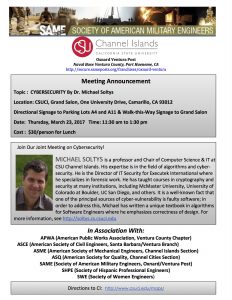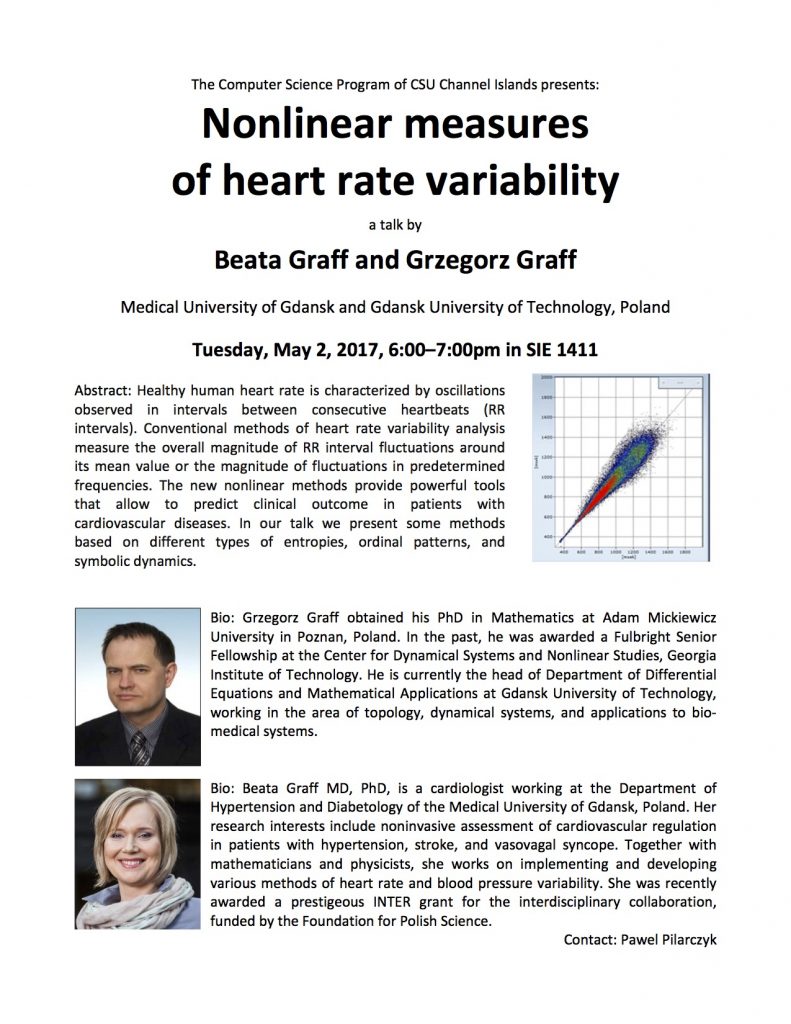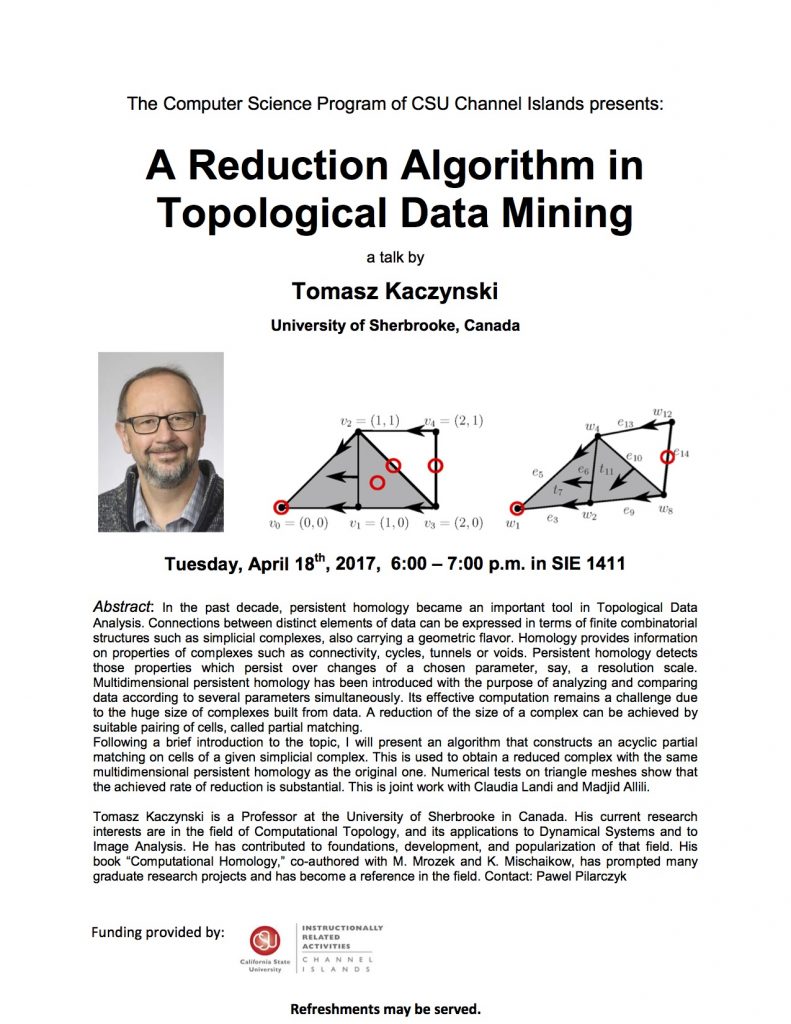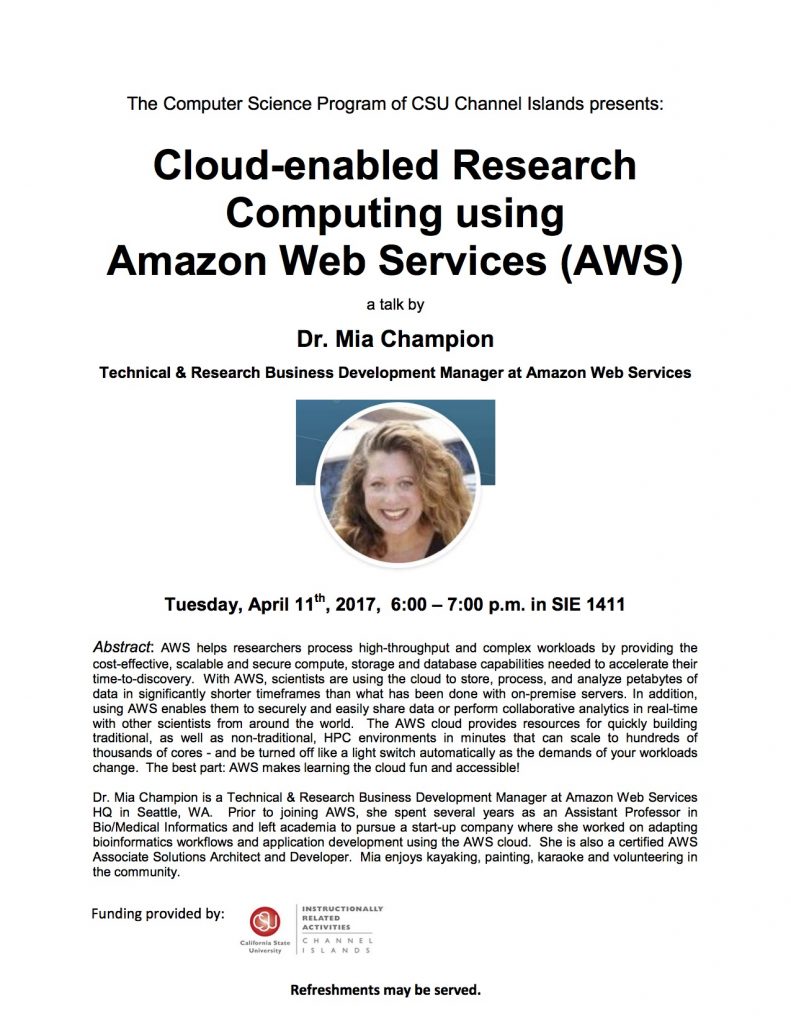Blog
New paper on normalization of inconsistency indicators – to appear in Journal of Approx Reason
Authors: Waldemar W. Koczkodaj, Dominik Strzalka, Jean-Pierr Magnot, Jiri Mazurek, James Peters, Michael Soltys, Jacek Szybowski, Arturo Tozzi, Hojjat Rakhshani
Title: On normalization of inconsistency indicators in pairwise comparisons
 Abstract: In this study, we provide mathematical and practice-driven justification for using [0, 1] normalization of inconsistency indicators in pairwise comparisons. The need for normalization, as well as problems with the lack of normalization, are presented. A new type of paradox of infinity is described.
Abstract: In this study, we provide mathematical and practice-driven justification for using [0, 1] normalization of inconsistency indicators in pairwise comparisons. The need for normalization, as well as problems with the lack of normalization, are presented. A new type of paradox of infinity is described.
Accepted for publication in the International Journal of Approximate Reasoning, April 2017.
Computer Science seminar in Data Mining Apr 18 6pm SIE1411
Comp Sci seminar talk by Mia Champion
Rasputin whips out large intimidating tool, penetrates uni, city, govt databases – new claim • The Register
SQL injection has been around since databases first appeared on the internet. When a web app allows anyone to pass data straight into database queries without that input being rendered safe through sanitization and filtering, that’s a SQLi vulnerability right there. This kind of bug can be exploited to command the database to do things – such as cough up all of its contents – that the web application should prevent from happening.
Rebuild our defenses for the information age – AEI
The Defense Department still uses 8-inch floppy disks and computers from the 1970s to coordinate nuclear forces, according to a report last year from the Government Accountability Office. Many of the Pentagon’s communications systems are so vulnerable to sabotage that the Army and Navy regularly practice fighting without them. Satellites can be shot down by missiles or have their sensors dazzled by lasers. Their ground links can be jammed or hacked.
Dale Hayden, a senior researcher at the Air Force’s Air University, told an audience of aerospace experts earlier this month that proliferation of antisatellite technology has put America’s communications networks at risk. “In a conflict, it will be impossible to defend all of the space assets in totality,” he said. “Losses must be expected.”
It has never been easier for America’s adversaries—principally Russia and China, but also independent nonstate actors—to degrade the U.S. military’s ability to fight and communicate. Senior military officials have expressed grave doubts about the security of the Pentagon’s information systems and America’s ability to protect the wider commercial virtual infrastructure.
PhD or PostDoc positions in Discrete Algorithms and Data Structures at Dortmund
The Technical University of Dortmund has one of the largest faculties
for Computer Science in Germany and offers a very stimulating
environment for algorithm theory and algorithm engineering.
The group of Johannes Fischer
(ls11-www.cs.uni-dortmund.de/fischer/start)
offers 2 full-time PhD or PostDoc positions in the broad area of Discrete
Algorithms or Data Structures, starting as soon as possible. We seek:
* PhD-students with an excellent Master’s (or equivalent) degree in
computer science and a strong interest in algorithms and data
structures, to be documented, e.g., with specialization in those
topics and very good grades.
* PostDocs with a PhD in computer science and a strong background in
discrete algorithms and data structures, to be documented, e.g.,
with a strong publication record in those fields.
Research areas of the group include:
– string algorithmics,
– text indexing for big data,
– indexes for approximate pattern matching
– text compression and compressed text indexing,
– external memory indexes,
– space efficient data structures, and
– shared memory and distributed parallel computing,
but other research topics fitting into the areas of stringology or
compressed data structures are also welcome.
A new paper on normalization of inconsistency indicators
A new paper: On normalization of inconsistency indicators in pairwise comparisons, by W.W. Koczkodaj, J.-P. Magnot, J. Mazurek, J.F. Peters, H. Rakhshani, M. Soltys, D. Strzałka, J. Szybowski and A. Tozzi.
Abstract: In this study, we provide mathematical and practice-driven justification for using [0,1] normalization of inconsistency indicators in pairwise comparisons. The need for normalization, as well as problems with the lack of normalization, are presented. A new type of paradox of infinity is described.
The paper can be found here: https://arxiv.org/abs/1702.07205v2
CI press release re my forthcoming SAME talk on cybersecurity
CSUCI Cyber-security expert to speak at on-campus engineering convention.
 Camarillo, Calif., Feb. 20, 2017—Whether it’s personal information, medical records, national security or election results, computer hacking is a rising national and global concern.
Camarillo, Calif., Feb. 20, 2017—Whether it’s personal information, medical records, national security or election results, computer hacking is a rising national and global concern.
CSU Channel Islands (CSUCI) Computer Science Chair and Professor Michael Soltys, Ph.D., will share his cybersecurity expertise to an audience of professional engineers from 11 a.m. to 2 p.m. on March 23 in the Grand Salon.
“Our society is under constant cyber-threat, as our infrastructure, our economy, and our privacy, depend on secure IT systems,” Soltys said. “My talk will consider the major threats, and present examples of how hackers attack our systems.”
Sponsored by the nonprofit Oxnard Ventura Post of the Society of American Military Engineers, the presentation is geared toward an audience with a high degree of computer expertise, so Soltys plans to share cybersecurity best practices.
“I plan to give more of a technical talk from the engineering point of view,” Soltys said. “How to write code that is more defended. I plan to show techniques hackers use to get into systems.”
One of the principal causes of cyber-vulnerability is faulty software, a problem Soltys addresses in a textbook on algorithms he wrote for software engineers.
Aside from his teaching at CSUCI, Soltys also acts as Director of IT Security for Executek International where he specializes in forensic work.
The public is welcome at the presentation, which is on campus at One University Drive in Camarillo. Cost is $30 a person for lunch.
Follow the directional signage to Parking Lots A-4 and A-11, then follow “walk this way” signage to the Grand Salon.
To register for the presentation, click on:
http://www.same.org/Oxnard-Ventura
Two famous Polish mathematicians on a bench
 If you ever travel to Krakȯw Poland, please sit on this bench, which has statues of two famous Polish mathematicians: Stefan Banach & Otton Nikodym.
If you ever travel to Krakȯw Poland, please sit on this bench, which has statues of two famous Polish mathematicians: Stefan Banach & Otton Nikodym.
Full Article (in Polish)
Kraków: ławka z figurami wybitnych polskich matematyków na Plantach
Ławka z figurami dwóch wybitnych polskich matematyków Stefana Banacha i Ottona Nikodyma została dziś (14.10.1016 r.) odsłonięta na krakowskich Plantach nieopodal wzgórza wawelskiego. Upamiętnia ona 100. rocznicę dyskusji matematycznej, jaką odbyli naukowcy.
Jak zaznaczył dr Krzysztof Ciesielski z Instytutu Matematyki Uniwersytetu Jagiellońskiego, ławeczkę ustawiono w okolicy miejsca, gdzie prawdopodobnie miało miejsce spotkanie matematyków. Figury Banacha i Nikodyma wykonał wybitny krakowski rzeźbiarz, prof. Stefan Dousa. “Teraz każdy będzie mógł dosiąść się do słynnych matematyków. Może odwiedzenie ławki przed maturą z matematyki przyniesie szczęście?” – zastanawiał się naukowiec z UJ.
W 1916 r. Hugo Steinhaus, młody uczony o sporym już dorobku matematycznym, podczas wieczornego spaceru krakowskimi Plantami usłyszał nagle słowa “całka Lebesgue’a”. Jak wyjaśnił dr Ciesielski, dziś całka Lebesgue’a jest jednym z podstawowych pojęć matematyki wyższej, wtedy jednak było to odkrycie ostatnich lat, znane wyłącznie specjalistom. Zaintrygowany Steinhaus podszedł więc do dwóch młodych krakowian dyskutujących o matematyce.
Jednym z nich był Stefan Banach, matematyk-samouk, drugim Otton Nikodym, absolwent studiów matematycznych we Lwowie, nauczyciel matematyki w IV gimnazjum w Krakowie. Okazało się, że młodzi ludzie mają sporą wiedzę matematyczną oraz wieczorami dyskutują o matematyce, spacerując po Krakowie, zwykle z trzecim kompanem, Witoldem Wilkoszem – szkolnym kolegą Banacha, studentem UJ. Steinhaus włączył się do rozmowy. Opowiedział im o problemie, nad którym od dłuższego czasu pracował. Wielkie było jego zdziwienie, gdy kilka dni później Banach przyniósł mu gotowe rozwiązanie.
Banach w 1920 r. wyjechał do Lwowa. Stał się później jednym z najsłynniejszych matematyków XX wieku, najważniejszą postacią lwowskiej szkoły matematycznej. Był współtwórcą analizy funkcjonalnej.
Nikodym pracował w Warszawie i Krakowie, po II wojnie światowej wyjechał do USA. Wiele ważnych wyników matematycznych jest dziś związanych z jego nazwiskiem. Trzeci z kompanów, Wilkosz, pozostał w Krakowie, uzyskał nominację na profesora Uniwersytetu Jagiellońskiego. Ma wielkie zasługi tak dla rozwoju matematyki, jak i jej upowszechniania i kształcenia młodzieży. Steinhaus wyjechał do Lwowa, po wojnie pracował we Wrocławiu – oprócz odkrycia Banacha ma na swoim koncie liczne doniosłe rezultaty matematyczne, napisał też wspaniałe książki popularyzujące matematykę.
Ławkę ufundowała krakowska firma technologiczna Astor. Nad całością działań czuwał komitet, powołany przez dziekana Wydziału Matematyki i Informatyki Uniwersytetu Jagiellońskiego. prof. Włodzimierza Zwonka.


